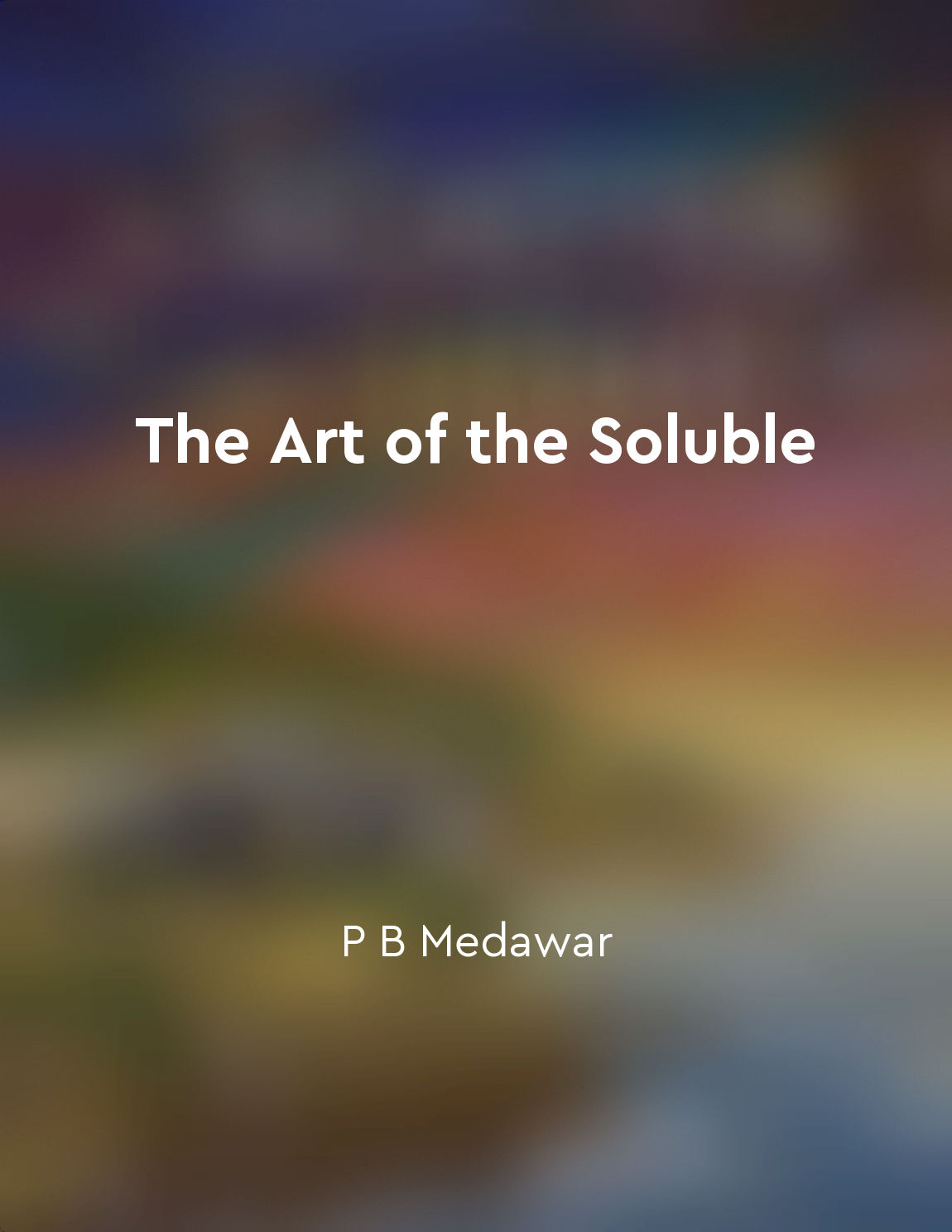Theories must be testable and falsifiable to be considered scientific from "summary" of The Art of the Soluble by P B Medawar,Taylor & Francis Group
The hallmark of the scientific method is its capacity for self-correction, and this self-corrective feature is founded on the principle that theories must be testable and potentially falsifiable. This requirement is not just a mere convention or a matter of personal preference; it is a fundamental criterion that distinguishes scientific theories from unscientific speculations. The demand for testability and falsifiability ensures that scientific theories are anchored in empirical evidence and subjected to rigorous scrutiny. A theory that cannot be tested or falsified is akin to a castle built on shifting sands - it may appear grand and imposing, but its foundations are inherently unstable. Without the ability to test a theory against observable phenomena or to potentially disprove it through empirical evidence, there is no way to verify its validity or reliability. In the absence of such empirical constraints, a theory can easily degenerate into mere conjecture or pseudoscience. The requirement for testability and falsifiability imposes a discipline on scientific inquiry, compelling researchers to formulate hypotheses that are amenable to empirical verification. This discipline is not a straitjacket that stifles creativity or innovation; rather, it is a safeguard that protects the integrity and credibility of scientific knowledge. By subjecting theories to the crucible of empirical testing, scientists can refine and improve their understanding of the natural world, weeding out erroneous or unfounded ideas in the process. The principle of testability and falsifiability is not a dogma to be blindly adhered to, but a pragmatic guideline that reflects the pragmatic nature of scientific inquiry. It is not a rigid rule that admits no exceptions, but a heuristic principle that guides the formulation and evaluation of scientific theories. While there may be room for debate and disagreement on the specifics of how to test or falsify a theory, the underlying principle remains inviolable: scientific theories must be subject to empirical validation and potential refutation.- The requirement for testability and falsifiability is a cornerstone of scientific methodology, ensuring that theories are grounded in empirical evidence and open to critical evaluation. This principle underscores the self-corrective nature of science, enabling researchers to refine and improve their understanding of the natural world through empirical testing and potential falsification. Without this requirement, scientific inquiry would be adrift in a sea of speculation and conjecture, devoid of the rigorous standards that characterize genuine scientific knowledge.
Similar Posts
The mind is fallible
The mind is fallible. This is a truth that we must acknowledge and accept. Our minds are not infallible, perfect instruments of...
NCERT Solutions serve as a valuable resource for students and teachers
NCERT Solutions provide a comprehensive and detailed explanation of concepts covered in the Science textbook for Class X. These...

Religious indoctrination is harmful
Religious indoctrination is harmful because it teaches children to accept a set of beliefs without evidence. When children are ...
Paradigms shape scientific progress
The development of science is often seen as a linear progression, with each new discovery building upon the knowledge that came...
Knowledge is infinite and unbounded
The idea that knowledge is infinite and unbounded is a fundamental insight that has profound implications for our understanding...

Soluble explanations are the hallmark of good science
The hallmark of good science is the ability to provide explanations that are soluble, that is, explanations that are clear, sim...
Embracing the scientific method is essential for a better future
The scientific method is a tool that has proven its worth time and time again in the pursuit of knowledge. It is a systematic w...

